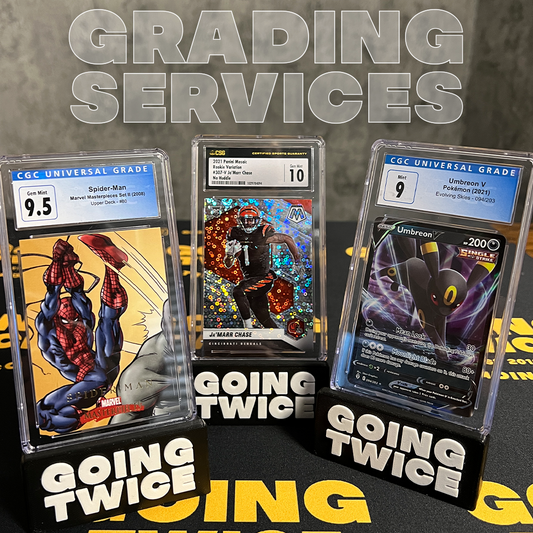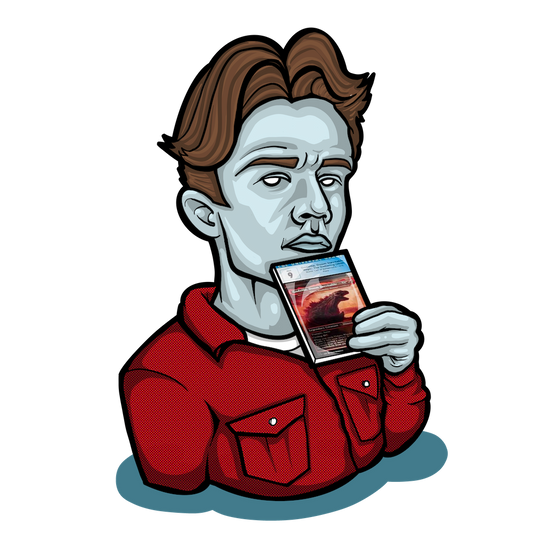Vintage Toys: The Ultimate Guide on How to Get Started

Here at Going Twice, we are collectors through and through and we’re always looking for new collectables to dive into. This week we’re going to focus on the vintage toy market, what it encompasses, and what it takes to get started as a vintage toy collector.
While you may be familiar with other collectibles such as Trading Cards or Comics, the vintage toy market has a culture and language all its own and this guide will introduce you to the basics.
Baby Steps
The path of vintage toy collecting is a series of small decisions or baby steps. The first step on your journey is to decide what you’re interested in collecting and why. Now you might be someone who gravitates towards the toys of your childhood for the pure nostalgia of it. It is definitely fun to take a trip down memory lane, finding all those toys that you totally forgot ever existed, begged your parents for but never got, or that super special toy that your mom sold at a yard sale and you never quite got over. Nostalgia can add a lot of joy to the process and is a great way to get started, but it can quickly become overwhelming when you realize that thousands of different kinds of toys were manufactured, each with their own variations, different waves, etc. So it helps to narrow it down a bit. Maybe pick one particular kind of toy (toy line) - it can be kind of broad at this point and research and toy hunting will help you narrow it down later.
You can also start very broad and collect what you like without any particular meaning or cohesion but again, that can be overwhelming and could kill your enthusiasm for the project. So our recommendation is to start narrow, you can always broaden the scope of you collection later when you are more comfortable with the process.
Next, start thinking about what you want to do with your toy collection.
- Do you want to display toys in minty boxes/packaging on shelves? Or display cases? Or in Tupperware totes?
- Do you want to play with them (i.e., you don't care about original packaging)?
- Does condition matter to you? Do you only want perfectly preserved toys/packaging?
- How much space do you have for storage/display? Should you aim for small toys (i.e., matchbox cars or figurines) because you have limited space?
- Will you need to invest in shelving, display cases, or acrylic display boxes? See this model car display case from Ultra Pro as an example.
- What is your budget for this collection (per month or year, or in its entirety)?
All of these things will affect where/how you hunt for toys, your budget, and how challenging the search will be.
Do a Little Research

Digging into those details we didn’t want to think about before (variants, print runs, etc) are really important once you get deeper into building your collection. Now some toy lines are really easy to research because there have been so many books/articles/youtube videos made about them. Think Star Wars, matchbox cars, Barbie dolls, GI Joes, etc.
They all have tons of information out there about them and that can both be really useful and sometimes overwhelming. The benefit is that you can find lots of information about the toys themselves as well as their market value. The downside is that many, many other people are out there hunting for the same toys as you so chances are that you will end up paying market value and amazing bargains might be few and far between.
On the other end of the spectrum, you could choose something obscure that might be easier to find good deals on but tougher to get information about. But you never know… My first thought writing this article was of Popples (stuffed ‘animals’ type thing that could fold into a ball) and despite how awesome they were, there was no way to find information about them. But, guess what?! I was wrong and someone has taken the time to catalog all Popples and Popple related products that were ever produced! I still have my original Popples but I’m thinking about expanding my collection now…

Learn the Lingo
Every area of collecting has its own language and it sure is helpful to know what the hell “nip” means when browsing listings on eBay. So here are few key terms/phrases that will be useful:
- nip/nib - new in package/new in bag
- mib/mip - mint in bag/mint in package
- moc - mint on card (toy packaged on cardboard card with plastic bubble over it)
- lib - loose in box (opened but not removed)
- loose - toy without original packaging
- htf - hard to find
- chase - limited-edition toy/figure that was not heavily produced
- variant - variation on already existing toy/figure (different color, etc)
- wave - series of a particular toy
- scalper - person who buys high value toys such as chase figures and posts them for sale at an inflated price
- antique - collectible item older than 100 years
- vintage - collectible item older than 20 years
- retro - item made to imitate a style from the past
You will probably notice a lot of this terminology is present in product descriptions on eBay or other online marketplaces and helps to clarify the condition of the toy.
Where to buy?
You can start your search for vintage toys in many different ways - in person or online, local or global. If you like the personal nature of finding toys in person, you can go to local yard sales or flea markets, check out estate sales and antique stores, or look for local listings (Craig’s List, Facebook marketplace, etc). I personally love yard sales because you can usually find good deals and there is the opportunity to negotiate a better price. The chances of finding toys that haven’t been played with or are in pristine condition, may be much lower at yard sales. Also don’t be afraid to ask people you know (childhood friends, etc) if they still have their old toys and if they might be willing to sell them to you. When I first got back into Pokemon cards, I was shocked at how many people offered to give or sell me their childhood collections. Again condition can be an issue in these types of situations but you never know...
The online marketplace has really expanded our options for buying and selling but has also made the market more competitive and the chances of getting really, really good deals is not great. Places like eBay and Mercari are the obvious online marketplaces, but don’t forget about Instagram, Facebook groups, and Whatnot. eBay is nice in that there is a record of past sales in the completed/sold search but can sometimes be difficult to tell if the toy advertised is actually the one you want.

Many vintage toys have been reproduced for a new generation of kids, sold as 'retro' toys, or never stopped being produced. This is where research is really handy - you need to know what you’re looking for in order to actually look. The social media platforms can be helpful here, join a few Facebook groups centered around the toy line you’re interested in or follow some collectors on Instagram. Depending on what kind of toy you're looking for, there are some great resources making comparisons between vintage and modern versions of toys. See Galactic Figures' guide on The Empire Strikes Back Collection.
Get Collecting!
Are you ready to start? Then set a budget - per toy, weekly/monthly/etc, or for the entire collection and start looking! You can collect with a budget of just about any size, you just need to be realistic about what your budget will get you. And don’t be too hyper-focused on the specific line of toys you’re looking for, if you see a bargain on another kind of toy that could be sold for a profit or traded for something you actually want, grab it! Collecting should be fun and it's great to get excited about the next thing you’re on the lookout for.




